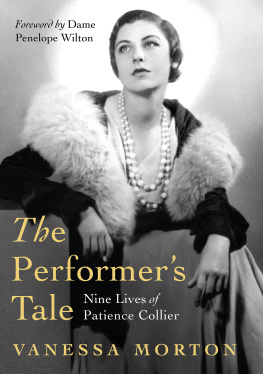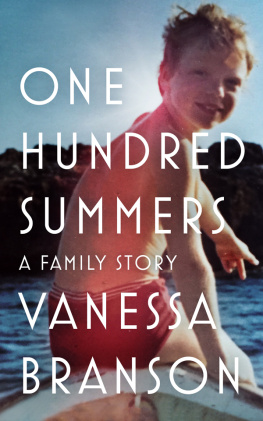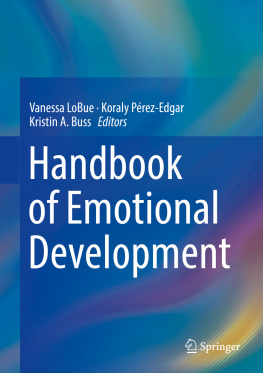Vanessa Duries - The Classmate
Here you can read online Vanessa Duries - The Classmate full text of the book (entire story) in english for free. Download pdf and epub, get meaning, cover and reviews about this ebook. year: 2015, genre: Romance novel. Description of the work, (preface) as well as reviews are available. Best literature library LitArk.com created for fans of good reading and offers a wide selection of genres:
Romance novel
Science fiction
Adventure
Detective
Science
History
Home and family
Prose
Art
Politics
Computer
Non-fiction
Religion
Business
Children
Humor
Choose a favorite category and find really read worthwhile books. Enjoy immersion in the world of imagination, feel the emotions of the characters or learn something new for yourself, make an fascinating discovery.
- Book:The Classmate
- Author:
- Genre:
- Year:2015
- Rating:3 / 5
- Favourites:Add to favourites
- Your mark:
- 60
- 1
- 2
- 3
- 4
- 5
The Classmate: summary, description and annotation
We offer to read an annotation, description, summary or preface (depends on what the author of the book "The Classmate" wrote himself). If you haven't found the necessary information about the book — write in the comments, we will try to find it.
The Classmate — read online for free the complete book (whole text) full work
Below is the text of the book, divided by pages. System saving the place of the last page read, allows you to conveniently read the book "The Classmate" online for free, without having to search again every time where you left off. Put a bookmark, and you can go to the page where you finished reading at any time.
Font size:
Interval:
Bookmark:
THE CLASSMATE
VANESSA DURIS
Contents
Preface, by Franck Spengler 7
Laika, by Florence Dugas 9
The Classmate 13
Chapter Two 21
Chapter Three 27
Chapter Four 33
Chapter Five 39
Photographs of Vanessa,
by Maxim Jakubowski 43
Translators Note 54
Preface
by Franck Spengler
Ihave for a long time hesitated before deciding to re-read the pages that Vanessa Duris entrusted to me. I was afraid of reliving an immense sadness. Vanessa and I had quickly established an almost filial rapport, quite different from the classic editor-author relationship, and far from the desire that she inspired or which she enjoyed inspiring. It is true that her young femme-fatale allure incited strong feelings that left few of those who came into contact with her indifferent. As it was, Pierre, my father-in-law, a great bibliophile, was the first one to receive a signed freshly-printed book from her. His embarrassment, mixed with a certain childish pride, amused us. I did not belong to the S & M seraglio with its decorum and its rituals; thus, she perceived me as a sort of non-judgmental father-figure who was concerned only with the text, and nothing but the text of her book.
I spoke to her as I would with my own daughter, Vanda, who at the time was thirteen when Vanessa was twenty. Vanessa used to call me regularly to tell me about her life, the people she ran into, difficulties with her parents, her doubts about the S&M milieu that had already become familiar to her and which she distrusted. Vanessa offered her body, but detested the venal aspect, whether moral or financial, while maintaining an amazing objectivity about the customs that she practiced.
Today, thirteen years after that terrible accident in which Vanessa perished (along with Nathalie Perreau, another of my writers, and my friend Jean-Pierre Imbrohoris) this unfinished text, of which she had sent me a first draft while she worked on the next, would take on a completely different dimension. Behind this story that I had given Florence Dugas to read, one perceived the unspoken changes in Vanessas behavior as I saw it.
To publish this novel that took a life is to render homage to one who was interrupted by fate. Had the text been finished, we would have had a great erotic text that could have been called, Transformation of a Submissive
because I strongly believe that it would have marked, for Vanessa, the abandonment of her bonds.
Laika
by Florence Dugas
When Frank Spengler confessed to me, one evening, half-misty, in London that he kept in his files the first five chapters of a novel once drafted by Vanessa Duris, the legendary author of The Tiesthat Bind, I begged him to give them to me for editing. Convincing him was more difficult than I had anticipated, and I had to plead.
So now I am in possession of what should have been a major work of erotic literature, if the brutal collision of a shiny Mercedes and an expressway railing hadnt ended the life of one whose Master, J-L
had named, Laika,her submissive name, her pet name. I read these forty pages all at oncefive chapters, five ill-fated chapters that had escaped the crash. And then I re-read them, slowly, letting my spirit and my hand escape towards dreams. . .
Vanessa had with her, in the Mercedes in which she was killed, the entire manuscriptas did Camus, who had in his briefcase the nearly-finished manuscript of The Last Man, which would be published thirty years later after the automobile driven by his publisher struck a tree.
Vanessas text disappeared in the aftermath of the accident, not burnt, because Fate was compassionate enough to save the heroines features and bodyintact, beautiful, unchanged, as in my memory, like in the cover of her short book without an endinfinite. Instead the car was ripped open, its passengers ejected, and the shirt-carton that held the pages opened under the impact. The wind blew hard on the A7 near Montlimar and the pages were scattered amongst the olive trees and the vineyards of the Rhone Valley.
It amuses me to imagine the shaggy head of a laborer finding, hanging on one of the vines, a page covered with round, magnificently feminine handwriting, and deciphering, in a cautious early morning, episodes of lust and fornication.
Lust, I have writtennow I should review the term. That story, in which the
title, written between parentheses, was only a working titlea symbol of that life, also between parenthesesis essentially a love story. Because the
classmate from Toulouse is certainly Vanessa, who had just begun English studies in Bordeaux, but it is also about what she found there.
Vanessa (her pen name) had at a very young age been initiated by he who she called her Master into the classic structures of S&M traditions.
In a sense, that is all she knew: the whip, the crop, the chains, the clamp and gags, the unknown men who would force her. . . All that she creates with virtuosity in the first chapter is in some sense a bridge between The Ties that Bind and this story. Nowhere there is the beauty of love, the tenderness, the passion, the adolescent attraction for the Other, that way of holding hands, of just touching, of swimming inside desire like a fish in the waterthere is only that satisfaction of desire that, after the last ecstasy, leaves you feeling only thoroughly frustrated until the next debauchery.
Should I confess that the style-less style of The Ties never really satisfied me? That the plain business-like behavior of the uncultured Dominant has always made me feel sick? And that it is a great pity that so much of the apprenticeship has been a raw genius modeled upon a story lacking all passion, except in the Christian sense of the word...
Having said that, I will draw an essential difference between The Ties and its author. Vanessa was very young when she was taken in hand by J-L. She was quite prettyand had I found her in 1993, I confess that I would have thought then, like a celebrated character out of DeSade: Itis true that the little slut is well made, and I swear that before the end ofthe day I will have enjoyed the pleasure of fucking her.
Circumstances would decide otherwise.
All of that is to say that it is necessary to completely disassociate Vanessa and her first work. The Ties was written under the influence.
The pages of her novel that have been rescued offer the fascinating spectacle of a butterfly leaving its chrysalisexcuse me for the clich of that image, but I dont see any other.
The Classmate is a love story. That the author has roughly decided to narrate it in the third-person shows her desire to distance herself from her passion to try to analyze it with objectivity. But though she undoubtedly wanted to hide in the shadow of the first name of her pen name (the manuscript carries only the initial V***) it is clear, at the same time, that it is her, no one but her, who narrates and who lives what is narrated.
I would like to think that in some part of the Pink City or somewhere else, lives that young girl with whom Vanessa fell in love, a pure and almost innocent girla half-virgin who was one day loved by a young woman who had learned everything about love, except love itself. I would also like to think that in the automobile that traveled towards its fate, Vanessa would think of that child of desire, more than in her
Master whom she had had loved harshly and from whom at the moment of her death she was, mentally at least, already detached. A
Master that survives from this world, in narrating to whomever would listen that he initiated Vanessa to the suspect delights of sadomasochism, and who would venally circulate the photos and the videos of these experiences. A miserable wretch who never understood that he had within his hands a woman full of heart and of spirit, and who believed to have understood her because he had whipped her and lent her to the pathetic habitus of the French S& M world.
Next pageFont size:
Interval:
Bookmark:
Similar books «The Classmate»
Look at similar books to The Classmate. We have selected literature similar in name and meaning in the hope of providing readers with more options to find new, interesting, not yet read works.
Discussion, reviews of the book The Classmate and just readers' own opinions. Leave your comments, write what you think about the work, its meaning or the main characters. Specify what exactly you liked and what you didn't like, and why you think so.













